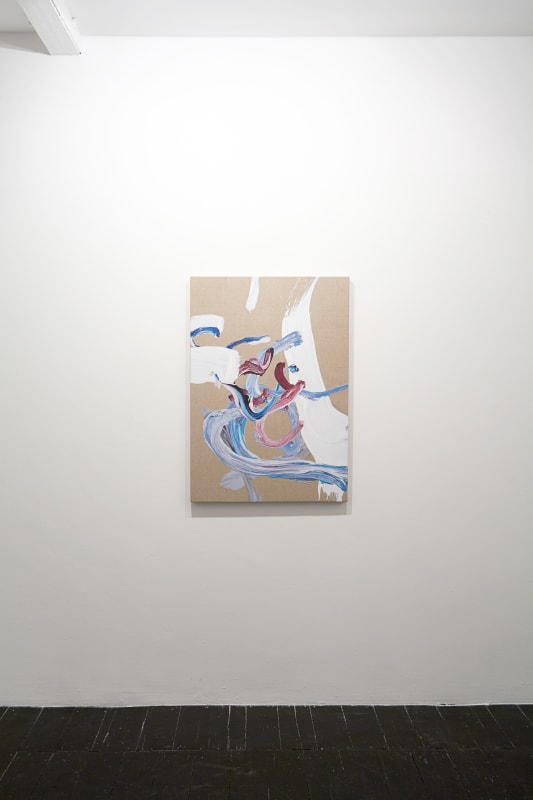UNION Gallery presents Cosmic Flesh; an exhibition of a series of new works on canvas by English artist Matthew Stone. These three new digitally printed works form part of a bold development in the technical, theoretical and aesthetic fields of the artist's practice. They represent a continuation of the works shown at Stone’s most recent solo show in March 2014 with The Hole in New York. Stone hand-paints on glass and photographs the brushstrokes, which he then extensively retouches and collages using Photoshop. These digital composites are then printed onto selectively primed, raw linen canvas. The resulting imagery is a firm and lucid statement on the new opportunities photography and digital processing present in extending the visual and practical potential of conventional painting.
Signalling a shift in Stone’s established visual language, these new works appear to abandon his usual figuration in favour of large scale and colourful brushstrokes. The compositions relate to a sense of movement and entanglement established prior, explicating the ideas of abstraction that Stone began to define in his previous photographic explorations of the body. Whilst the brushstrokes tumble like limbs across the canvas, Stone uses advanced Photoshop layering to weave the individual gestures in ways that would not ordinarily be possible without digital intervention. The digital process remains integral to other aspects of the works, defining scale and the enlargement of brushstrokes, the removal of all dust and blemishes as well as sensitive colour management.
Stone’s works ultimately exist as figurative depictions of abstract images. A similar restructuring of image and representation can be found in Roy Lichtenstein’s paintings depicting enlarged brushstrokes. Lichtenstein’s quoted and hand-rendered strokes impress by visual simplification, while Stone’s printed photos of similar gestures are actively intensified. This process of making vivid and creating a sense of a painterly hyper-real occurs within the manipulation of photography not paint. Like Andreas Gursky’s use of digital manipulation to depart from the ‘decisive moment’ towards constructed images, Stone includes photography as only part of the process. Examining this process immediately offers photography as painting, but perhaps in this case more fertile ground can be found by examining how these “paintings” might exist as examples of contemporary photography.
Stone’s efforts are sincere in both their questioning of and commitment to paint, remarking “It feels necessary to challenge the established worship of paint as untouchable cosmic flesh, but in doing this I intend to contribute to the continued legacy of it’s emotionally manipulative power.” These ideas manifest themselves in works that intentionally disrupt notions of what constitutes painting. By creating an image of an abstract image, by subjectively retouching it and ultimately by printing rather than directly painting onto the canvas, the existing redundancies of paint that Stone acknowledges and the new ones he chooses to create, are both reversed.
Cosmic Flesh: Matthew Stone
Past exhibition
